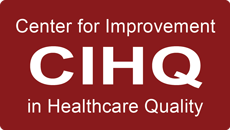
An emergency occurs every day in hospitals across the United States. Large or small these emergencies can adversely affect the daily operations of the hospital and range from internal disasters (e.g., flooding, electrical power outage) to natural and technological disasters (e.g., tornadoes, cyber security). Each disaster requires a response that can come from hospital departments assisting one another, community partners, or from State and Federal agencies. What is critical is that responders need to be able to work together, communicate with each other, and depend on each other to appropriately respond to the situation. In March 2004, the Federal Emergency Management Agency (FEMA) published the first National Incident Management System (NIMS). NIMS was designed to synchronize the guidance with changes to laws, policies, and best practices by using fundamental guiding objectives. NIMS soon became the standard for domestic incident response and quickly cascaded across all levels of government and emergency response agencies. Let’s look at the NIMS top five guiding objectives.
NIMS Guiding Objectives:
Components
NIMS is comprised of six (6) components that work together as a system to provide a national framework for preparing for, preventing, responding to, and recovering from incidents:
Components
NIMS is comprised of six (6) components that work together as a system to provide a national framework for preparing for, preventing, responding to, and recovering from incidents:
- Command and management
Is based on three key organizational systems:- The Incident Command System (ICS): which defines the operating characteristics, management components, and structure of the incident management organizations throughout the life cycle of an incident.
- Multiagency Coordination System: which define the operating characteristics, management components, and organizational structure of supporting entities.
- Public Information Systems: which include the processes, procedures, and systems for timely communication and accurate information to the public during emergency situations.
- Preparedness
Involves a combination of planning, training, exercises, staff qualifications and certification, equipment acquisition, public management processes and activities, and mutual aid agreements related to any potential incident. - Resource Management
When NIMS is fully implemented, it will define standardized mechanisms and establish requirements for describing, inventorying, mobilizing, dispatching, tracking, and recovering resources over the life span of an incident. - Communications and Information Management
Here, NIMS identifies the requirements for a standardized framework for sharing information support at all levels of incident management so that incident management organizations have an effective, interoperable communications process across all agencies and jurisdictions. This allows information to flow efficiently through commonly accepted channels of communication. - Supporting Technologies
This is accomplished by implementing and refining voice and data communication systems, information management systems such as record keeping, resource tracking and the use of data display systems identified in the NIMS program. - Ongoing Management and Maintenance
Arranges strategic direction and oversight in support of routine review and continual refinement of both the system and its components over the long term.
Flexibility
The flexibility of NIMS allows it to be applicable for incidents that vary widely and is adaptable to many types of hazards, geographical location, climate, cultural, and organizational authorities. The components of NIMS are designed to be applicable to situations as planned exclusive events, routine local incidents, and incidents involving interstate mutual aid or Federal assistance, and to work effectively during incidents that require multiagency, multijurisdictional, and/or multidisciplinary coordination.
The flexibility of NIMS allows it to be applicable for incidents that vary widely and is adaptable to many types of hazards, geographical location, climate, cultural, and organizational authorities. The components of NIMS are designed to be applicable to situations as planned exclusive events, routine local incidents, and incidents involving interstate mutual aid or Federal assistance, and to work effectively during incidents that require multiagency, multijurisdictional, and/or multidisciplinary coordination.
Standardization
NIMS defines standard organizational structures that improve integration and connectivity among jurisdictions which is essential to networking among multiple organizations in incident response. By using common terminology, incident personnel can effectively work together and foster cohesion among the various organizations involved.
NIMS defines standard organizational structures that improve integration and connectivity among jurisdictions which is essential to networking among multiple organizations in incident response. By using common terminology, incident personnel can effectively work together and foster cohesion among the various organizations involved.
Unity of Effort
Unity of effort permits organizations with specific jurisdictional responsibilities to support each other while maintaining their own authorities and to achieve common objectives.
Unity of effort permits organizations with specific jurisdictional responsibilities to support each other while maintaining their own authorities and to achieve common objectives.
Standards and Requirements
FEMA recommends minimum qualifications, but it is the authorities having jurisdiction (AHJs) across the nation that establish, communicate, and administer the qualification and credentialing process. AHJs have the authority and responsibility to develop, implement, maintain, and oversee the qualification, certification, and credentialing process within their organization or jurisdiction and may impose additional requirements outside of NIMS for local needs.
FEMA recommends minimum qualifications, but it is the authorities having jurisdiction (AHJs) across the nation that establish, communicate, and administer the qualification and credentialing process. AHJs have the authority and responsibility to develop, implement, maintain, and oversee the qualification, certification, and credentialing process within their organization or jurisdiction and may impose additional requirements outside of NIMS for local needs.
When an incident occurs or threatens your hospital, local incident personnel respond using NIMS principles and structures to outline their activities. The NIMS program is applicable to all incidents and all levels of stakeholders who assume a role in emergency management. Therefore, it is important that all entities involved in response operations have site specific NIMS training. This training will allow staff to apply and implement NIMS components in accordance with the principles of flexibility, standardization and unity of effort all designed to help save lives, stabilizing the incident and protecting property and the environment.
